Horses are amazingly beautiful and graceful animals, but at times, they can be aggressive.
It’s important to know what a horse can do when it’s angry or aggressive as well as how to handle such a situation.
Today we’ll discuss several ways in which aggressive horses can hurt you, why they sometimes act hostile, and what the most dangerous horse breeds are. Let’s get going!
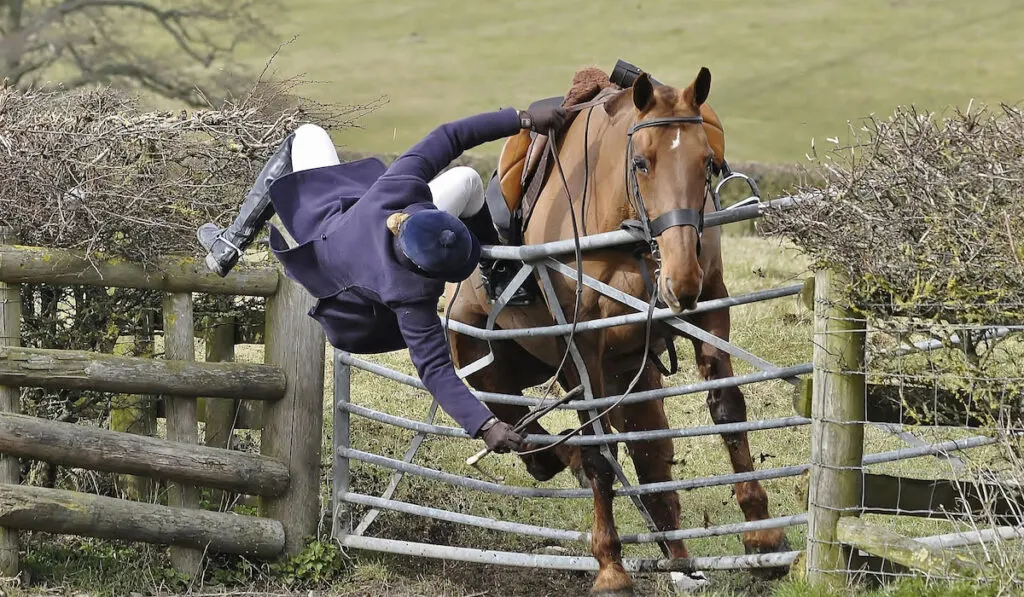
Table of Contents
How Can a Horse Hurt You?
Let’s look at some of the ways horses can endanger people.
You Can Fall Off Its Back
If you fall off a horse when it’s angry or rowdy, the consequences can be pretty bad, sometimes even fatal. Don’t take helmets for granted; there’s a good reason why it’s recommended to wear one.
Even if an animal is calm when you’re on its back, you can get distracted, and an accident can happen before you know it.
Horses Can Bite
Horses are herbivores, which means they have no interest in meat.
However, when irritated, a horse will not hesitate to bite your arm or hand, or whichever part of your body is closest at that moment.
They have a powerful bite and strong teeth that can crush the bones in your hands or fingers without any particular effort.
Besides this, a horse bite can leave you with severe cuts and injuries that can later get infected. This happens due to all the bacteria in their mouth.
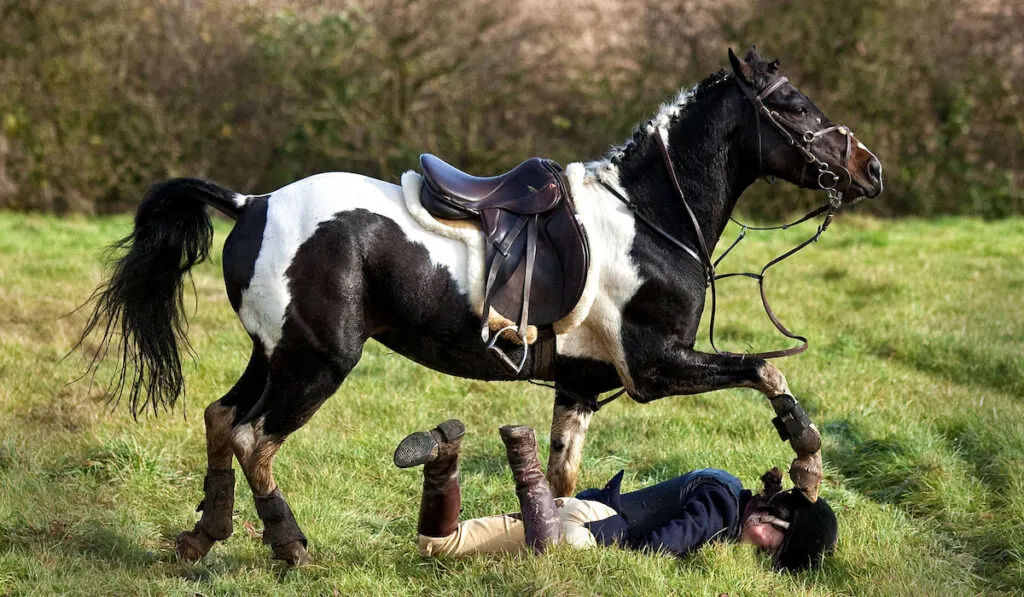
Horses Can Step on You
Even if a horse isn’t angry or irritated, it can still accidentally step on your hand, foot, or some other part of your body if you don’t move away fast enough if you happen to be in its way.
The animal can get scared too. If you’re on its back and you’ve suddenly fallen off, quickly move away.
Horses are pretty heavy, so they can step on you and cause serious injuries, bruises, or cuts on your body.
Horses Can Drag You Around
Another potential way to injure yourself is when a horse drags you around, which is just as risky as being knocked over or falling off.
You can get tangled in the tack or get stuck while trying to stop an animal by clinging onto its reins.
How can you avoid this? Use stirrups and safety equipment to reduce your chances of suffering serious injuries while being dragged by a horse.
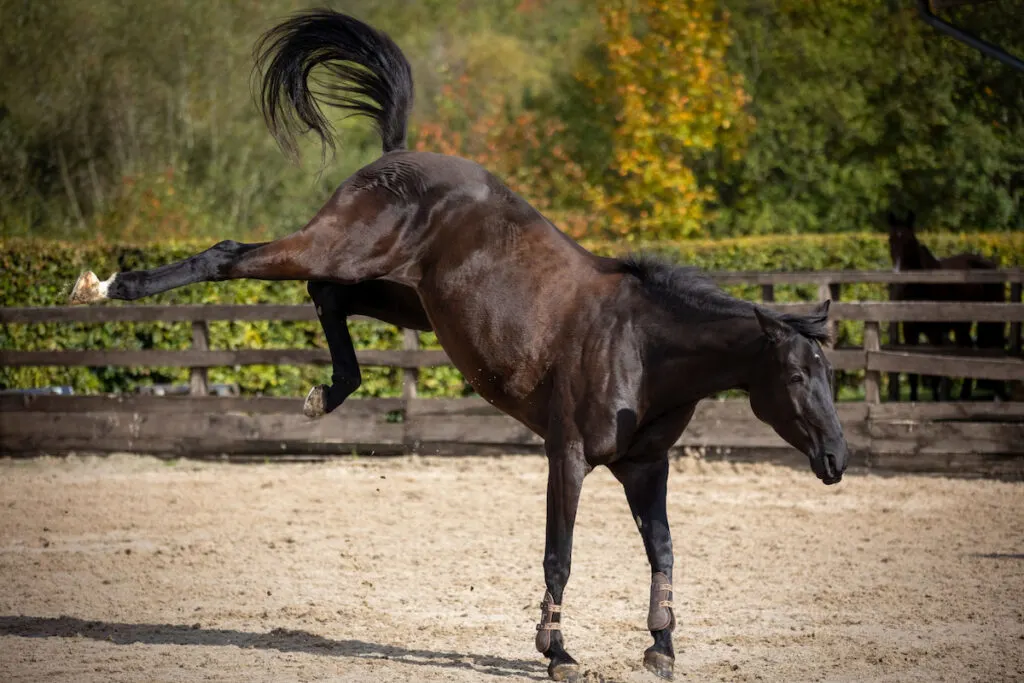
Horses Can Fiercely Kick You
Horses are generally very peaceful animals. However, when they are irritated or feel they need to defend themselves, they can show you how incredibly strong they are, and generally, it’s not very nice.
Horses can kick extremely hard using their rear legs, with a force of 2,000 pounds per square inch and at a speed of about 200 mph!
This is just the force of a single kick; imagine how dangerous it can be to get multiple kicks with such a big force.
Why Do Horses Get Aggressive?
Most of the time, horses are calm and peaceful. They usually won’t become aggressive unless they have a good reason for it.
They’re frightened
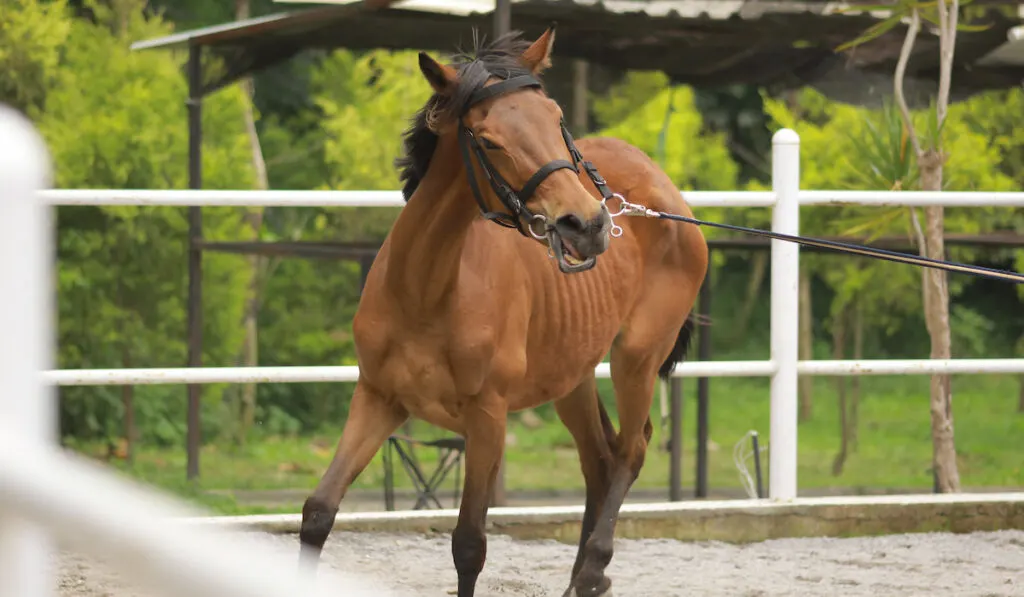
Some horses haven’t had that much training, so they’re not used to sudden movements, smells, unknown noises, other animals, and other things that make them stressed.
When scared, a horse can behave very aggressively, especially when it doesn’t have enough space to freely run away from a source of danger.
They’re in Pain
Pain is another reason horses act aggressively. They could be dealing with various health problems like a limb injury, dental pain, colic, potential issues with their hooves, or more.
Make sure an animal has health check-ups on a regular basis, monitor its health, and make sure it gets deworming medications and all necessary vaccinations on time.
They’re Thirsty or Hungry
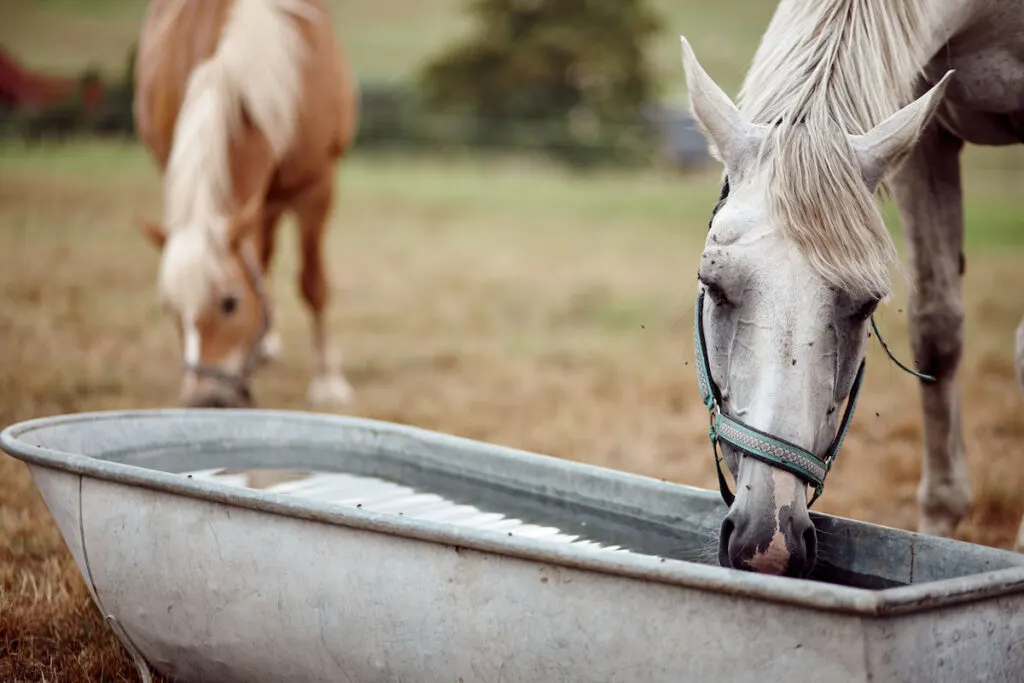
Horses have a fast metabolism, yet their stomachs are not able to hold a lot of food at once. That’s why they need to have access to fresh water and food all the time. It’s also important for an animal to stay hydrated throughout the day.
When horses are hungry or thirsty, it can be very painful for them, which can make them behave aggressively.
They’re Stressed Out
Horses get stressed if something spooks them, or when they’re in new situations, like meeting new animals, and other horses.
Also, it’s hard for them when they’re closed in for too long or don’t exercise enough. Lack of mental stimulation makes them feel depressed and stressed as well.
What Is the Most Dangerous Horse Breed?
The Przewalski is a type of horse we’ve never actually managed to domesticate.
Even though their population is decreasing consistently (the current number is 1,900 specimens), the Przewalski is the last remaining wild horse breed.
Przewalski horses once grazed on the steppes of Central and East Asia.
Now you can find them in Mongolia, China, and Kazakhstan. Mongolians refer to these short, stocky horses as Thaki horses and even consider them sacred.
5 Other Dangerous Horse Breeds
Most of the time, you are safe near domesticated horses. However, there are some situations when they can act aggressively, like the ones we’ve already described.
Handling feral and wild horses is different, though. Wild horses have never lived with humans, whereas feral horses have descendants that used to be domesticated until they ran away and adapted to wild life.
You can hardly predict the behavior of either one, which is why you need to be extra careful around them.
So, let’s skip to the list of the rest of the dangerous horse breeds now!
Welsh Pony
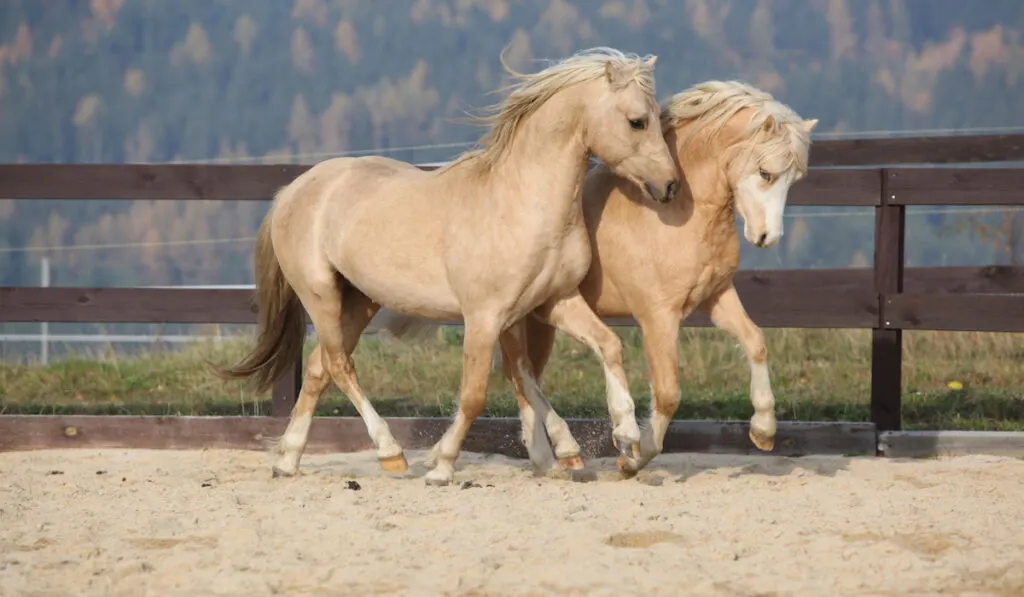
Don’t confuse the Welsh Carneddau ponies with domesticated ones! We’re talking about the wild breed you can come across in the highlands of Snowdonia National Park.
Their population was once in the thousands, whereas now they are just a little bit over 200. The winters in North Wales are very cold, which is one of the greatest dangers to their survival.
Only the strongest and most hardy ponies survive the harsh winters and snowstorms. Unfortunately, due to harsh conditions, half of their population perishes.
Mustang
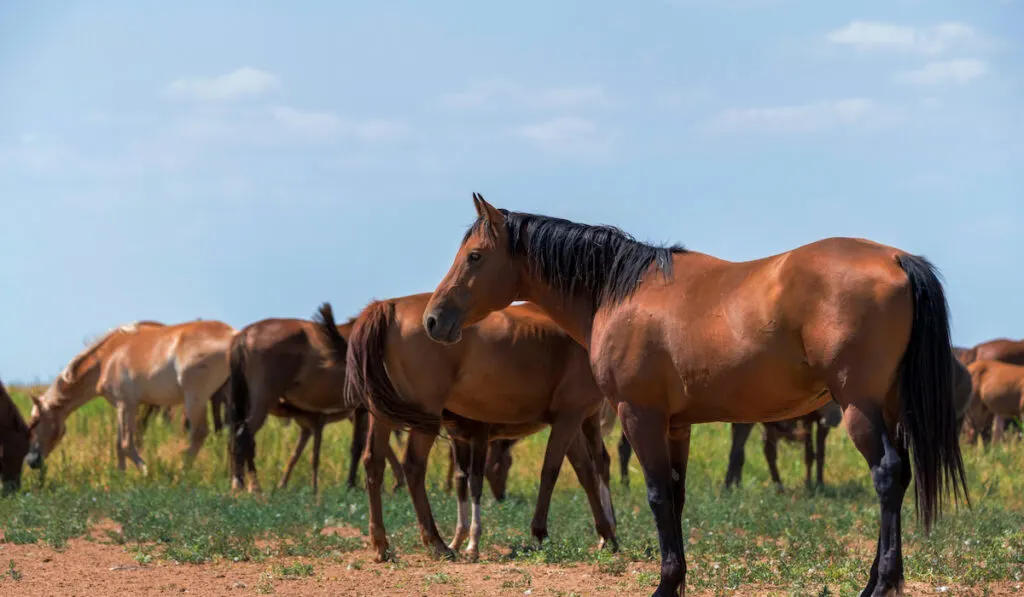
The Mustang is a feral horse breed that you can mostly find roaming in sizable herds in the western regions of the United States.
Spanish colonial immigrants brought it to the Americas.
The Mustang is a hybrid of several different breeds, including Draft and well-known American Quarter horses.
Mustangs are a violent breed with a history of attacking those who approach them. If you find yourself close to one, try to maintain a distance of about 100 feet.
Brumby
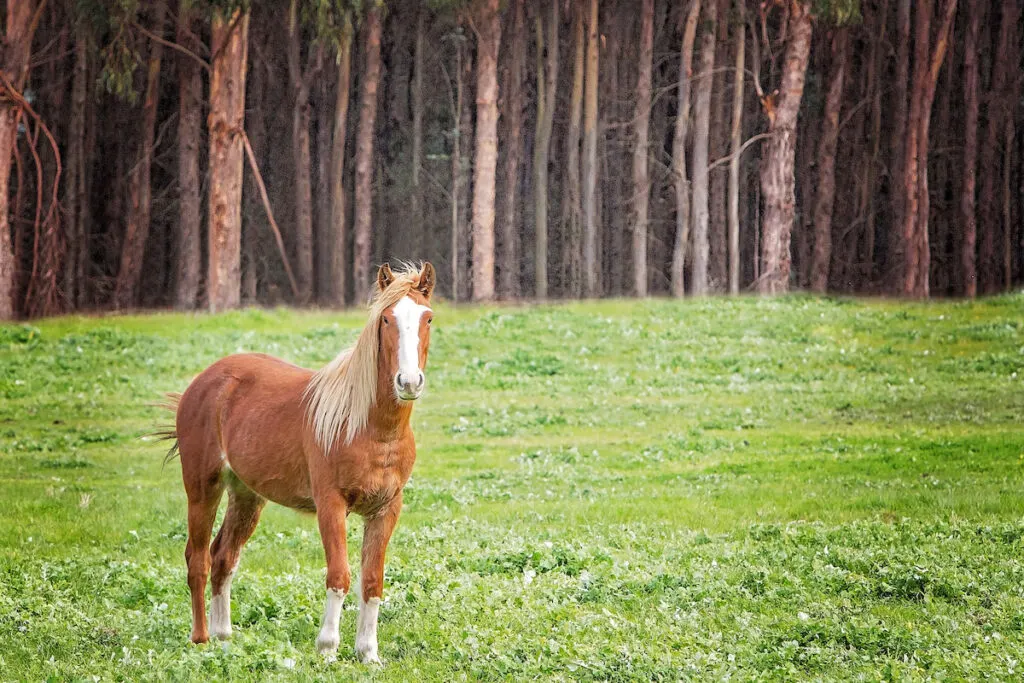
The Brumbies are feral horses that roam across the vastness of Australia. There are approximately 400,000 of them, with the majority living in Queensland’s Northern Territory.
Brumbies don’t like to be around humans. They see people as a threat because they have tried to interfere with and manage their feral nature before.
Konik
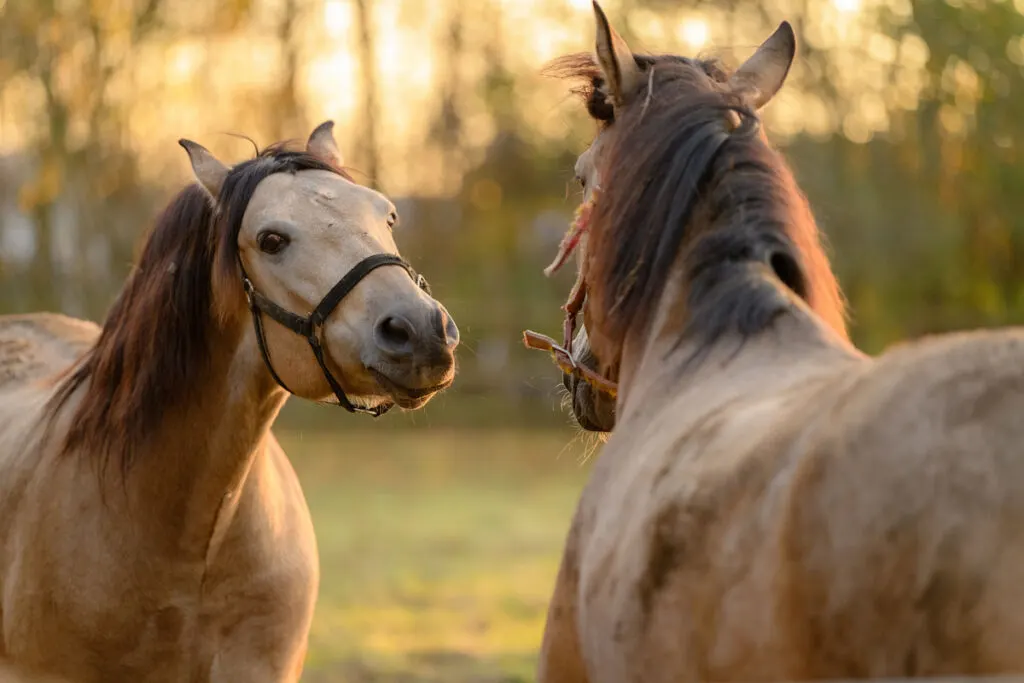
The Konik is a wild breed that originated in Poland.
The rest of Europe got to know the Konik when they were brought onto protected lands in national reserves across the continent.
As a part of these conservation grazing projects, they helped increase biodiversity and keep other wildlife safe.
You can easily distinguish this breed from others due to their dark legs and faces and blue dun (gray with darker and lighter areas in it) coat. Also, there’s a black stripe that goes along their backs and, in some cases, even their legs.
Arabian
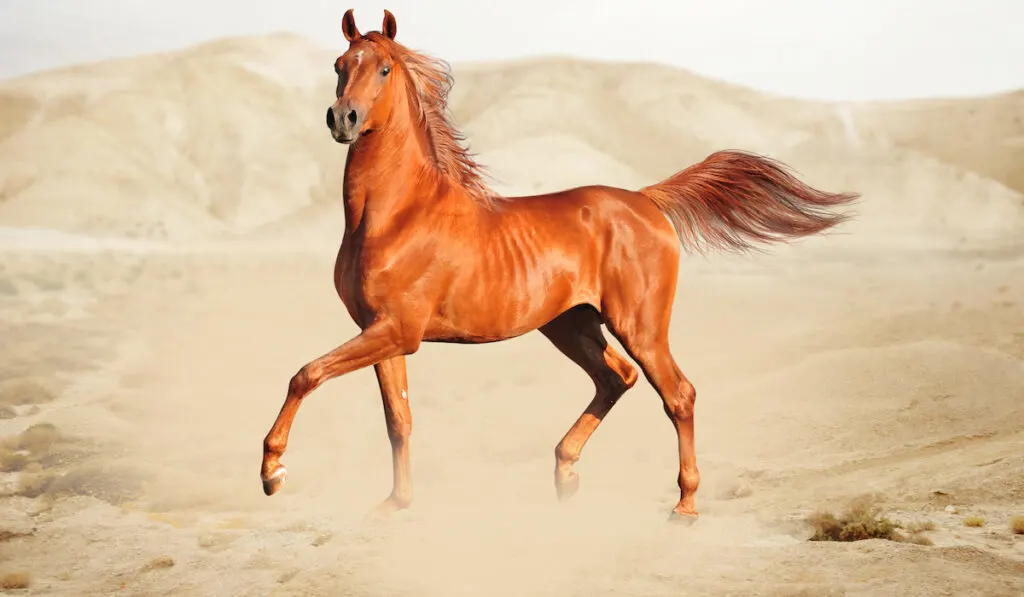
Arabian horses are domesticated, but they’re hot-blooded and, therefore, difficult to handle, especially if you are a first-time owner.
They’re known for their endurance and stamina, which is why they often participate in endurance races.
Again, they’re not easy to handle, especially for beginners.
The coloration of Arabian horses lightens as they mature. Their true origin is still unknown, but they generally come from Arab countries.
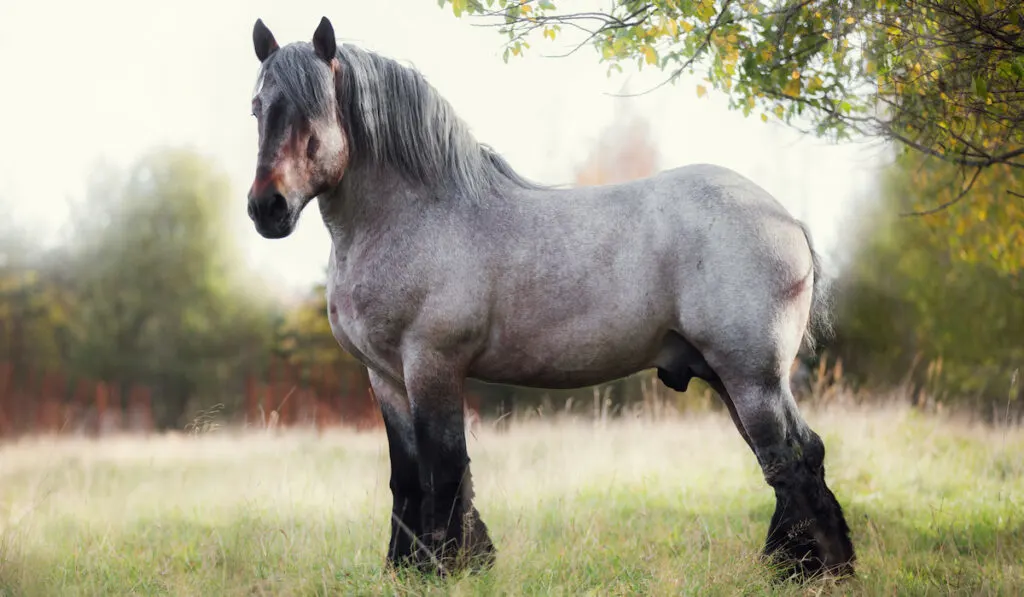
What’s The Strongest Horse Breed?
In many situations when horses are aggressive, they either want to protect themselves, their young, or their owner. When they act hostile, you can also see how incredibly strong they are.
For hundreds, if not thousands of years now, we’ve been relying on these amazing animals, and their strength is one of the main reasons for that.
People needed help pulling heavy loads and working in fields, which is why they selectively bred horses that have become extremely strong over time.
The strongest horse breed is considered to be the Belgian. Besides them, some other strong breeds are the Shire, Suffolk Punch, Ardennes, and Percheron.
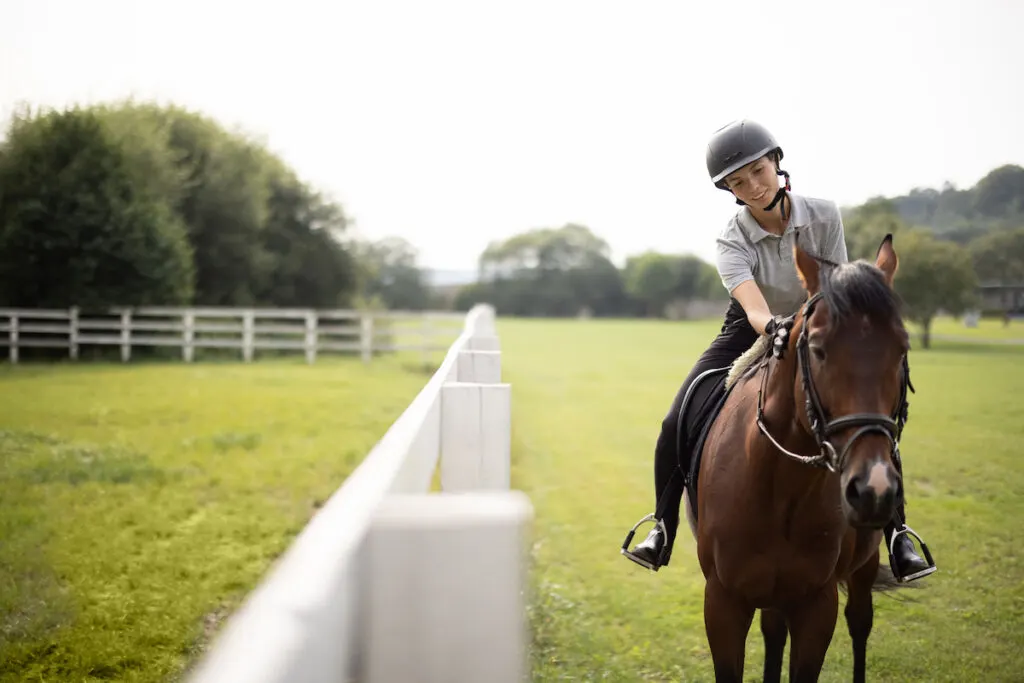
What is The Hardest Horse Breed to Ride?
It’s hard to say which horse breed is the hardest to ride because many factors can affect a horse’s temperament and trainability, including their individual personality, training, and experience.
However, some horse breeds are known to be more challenging for riders due to their size, strength, energy levels, or temperament.
For example, Arabian horses are known for their high spirits and intelligence, which can make them challenging to train, especially for inexperienced riders.
Some riders may also find Thoroughbreds challenging to ride due to their high energy levels and sensitivity.
When considering horseback riding, regardless of the horse breed you own, it’s crucial to check for and adhere to rules and regulations governing where it is permissible to ride. You can find a summarized guide to these regulations here.
Some Final Words
Horses are stunning and useful animals, but they can also get irritated and act aggressively for multiple reasons like hunger, thirst, stress, fear, and pain.
There are also a couple of ways a horse can hurt a human being when it is irritated or angry. These include biting, kicking, dragging, stepping, and letting a person fall off its back.
There are some dangerous breeds that pose significant danger if you’re close to them, especially among wild horses.
Some claim the most dangerous breed is Przewalski’s horse since we’ve never actually managed to domesticate them.
These fascinating animals are not generally aggressive; they just know how to defend themselves when they sense something that represents a danger to them.
Horses are also incredibly strong, which is why you need to be extra careful around them, especially if you’re not that experienced and still don’t know how to calm them down.
Resources
- https://vivopets.com/most-dangerous-horse-breed/
- https://yardandgardenguru.com/what-is-the-most-dangerous-horse-breed/
- https://horseyhooves.com/strongest-horse-breeds/
- https://farmhouseguide.com/worst-horse-breeds-for-beginners/

